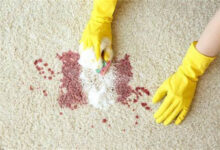Understanding the hidden impact of termite infestations on cleaning services

cleanliness is often associated with visible hygiene — sparkling floors, dust-free surfaces, and a fresh scent in the air. however, the true measure of a clean environment also depends on what lies beneath the surface. one hidden enemy that disrupts even the most thorough cleaning routines is the termite. this small yet destructive insect doesn’t just damage property—it creates environments that are unsanitary, unsafe, and difficult to maintain.
for professionals in the cleaning services industry, recognizing the role of termite infestations is increasingly important. this article explores how cleaning teams can respond to termite challenges, enhance their services through early detection, and contribute to pest prevention through routine maintenance.
what exactly is a termite?
a termite is a small, social insect that feeds primarily on wood and other cellulose-rich materials. while there are various types—like subterranean, drywood, and dampwood termites—they all have one thing in common: the ability to silently destroy structures from the inside out.
unlike cockroaches or ants, termite activity often goes unnoticed until the damage is severe. and because their activity is largely hidden within walls, floors, and furniture, cleaning professionals are often the first line of defense in identifying their presence.
why cleaning services must care about termite presence
it may seem that termite control falls under pest management, not cleaning services. however, the two industries often overlap. termites compromise structural integrity, leave behind droppings (called frass), and cause dust and debris that cleaning teams must address.
in both residential and commercial settings, termite infestations also lead to:
- increased dust due to decaying wood,
- unsanitary conditions from insect waste and mold growth,
- repetitive damage to cleaned or restored areas.
therefore, ignoring termite problems can make cleaning efforts futile and damage a company’s reputation for delivering safe, spotless environments.
signs of termite activity that cleaners should watch for
while performing daily or weekly cleaning tasks, professionals are in a great position to spot early signs of termite infestations. here are key indicators that shouldn’t be overlooked:
- tiny mud tubes along walls or corners, created by subterranean termite for travel.
- hollow-sounding wood when tapped, which might indicate internal destruction.
- piles of discarded wings around window sills or door frames after swarming.
- droppings resembling sawdust (especially near wooden furniture).
- blistering paint or sagging floors, which may mimic water damage but stem from termites beneath.
routine visual inspections during cleaning can help identify these red flags early, giving clients time to act before serious damage occurs.
integrating termite monitoring into your cleaning protocol
cleaning companies can elevate their services by offering pest awareness as part of their routine operations. adding a termite checklist to your cleaning schedule demonstrates attention to detail and concern for your client’s long-term well-being.
here’s how to start:
- train staff to recognize signs of termites and report them immediately.
- include inspection zones in bathrooms, kitchens, attics, basements, and near wooden furniture.
- log findings with photo documentation when unusual dust, droppings, or wings are found.
- communicate concerns professionally to the client, possibly recommending a licensed pest control inspection.
this small adjustment can lead to better service reviews, long-term contracts, and increased trust from clients.
the role of moisture control in termite prevention
cleaning services are uniquely positioned to help prevent termite infestations by managing moisture. termites thrive in damp environments, which is why bathrooms, basements, and poorly ventilated rooms are hotspots for their activity.
through regular cleaning and smart maintenance, professionals can reduce the appeal of environments to termites. strategies include:
- drying damp surfaces thoroughly,
- wiping down sinks and bathtubs after cleaning,
- improving airflow in humid areas by opening windows or using fans,
- identifying and reporting leaks or condensation buildup.
preventing damp conditions also reduces mold growth, another hidden health hazard.
See also: How To Choose The Right Executor For Your Estate
offering post-treatment cleaning for termite-affected spaces
when clients undergo professional termite treatment, the aftermath usually requires specialized cleaning. pesticide residues, wood shavings, frass, and damaged areas must be thoroughly cleaned to restore a sanitary environment.
offering post-treatment cleaning services gives your business a competitive edge. here’s how to approach it:
- use vacuum systems with fine filters to capture insect waste,
- clean treated surfaces using eco-friendly, non-reactive disinfectants,
- air out the space to remove lingering chemical smells,
- dispose of any contaminated items or materials following safety guidelines.
educating your clients about termite risks
many people are unaware of how common termite issues can be, especially in humid climates or in buildings made with untreated wood. cleaning companies can educate clients without sounding alarmist by sharing simple tips such as:
- reduce paper clutter and cardboard storage in basements or storage rooms,
- schedule annual termite inspections, especially for older properties,
- seal cracks in the foundation and around entry points to block termites,
- maintain clean, dry gutters and downspouts to prevent excess moisture near the foundation.
you can incorporate these educational messages into brochures, newsletters, or even during on-site visits.
conclusion: the cleaner’s evolving role in pest awareness
in today’s cleaning services industry, offering surface-level tidiness is no longer enough. clients want comprehensive care—spaces that are clean, healthy, and protected. recognizing the hidden damage caused by the termite allows cleaning professionals to extend their impact and offer smarter services.
by integrating termite awareness into your cleaning routine, training your staff, and collaborating with pest control experts, your business becomes a proactive force in both hygiene and property care. in the process, you build deeper trust with clients, expand your service offerings, and ensure that every clean space is also a safe one.







